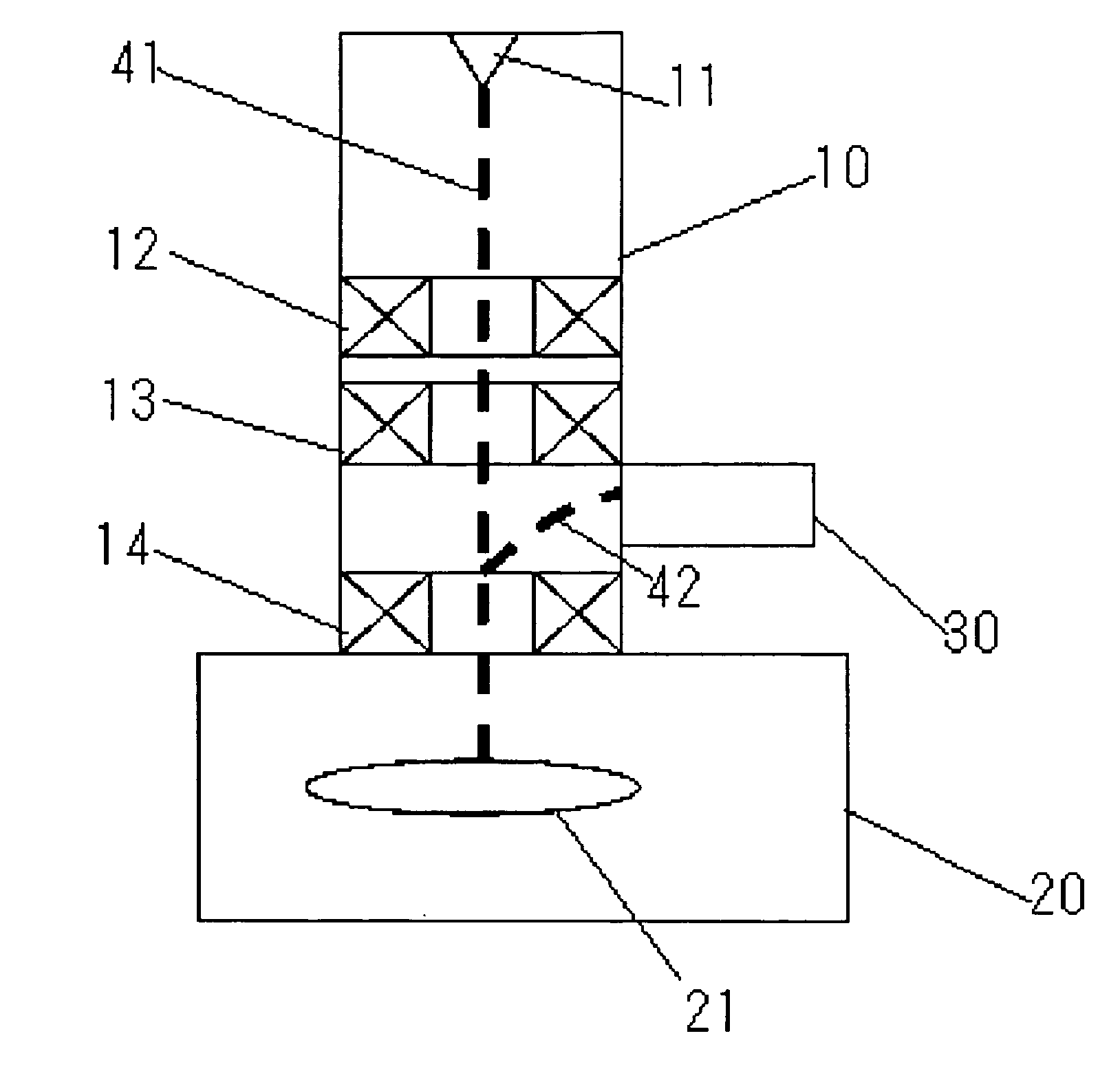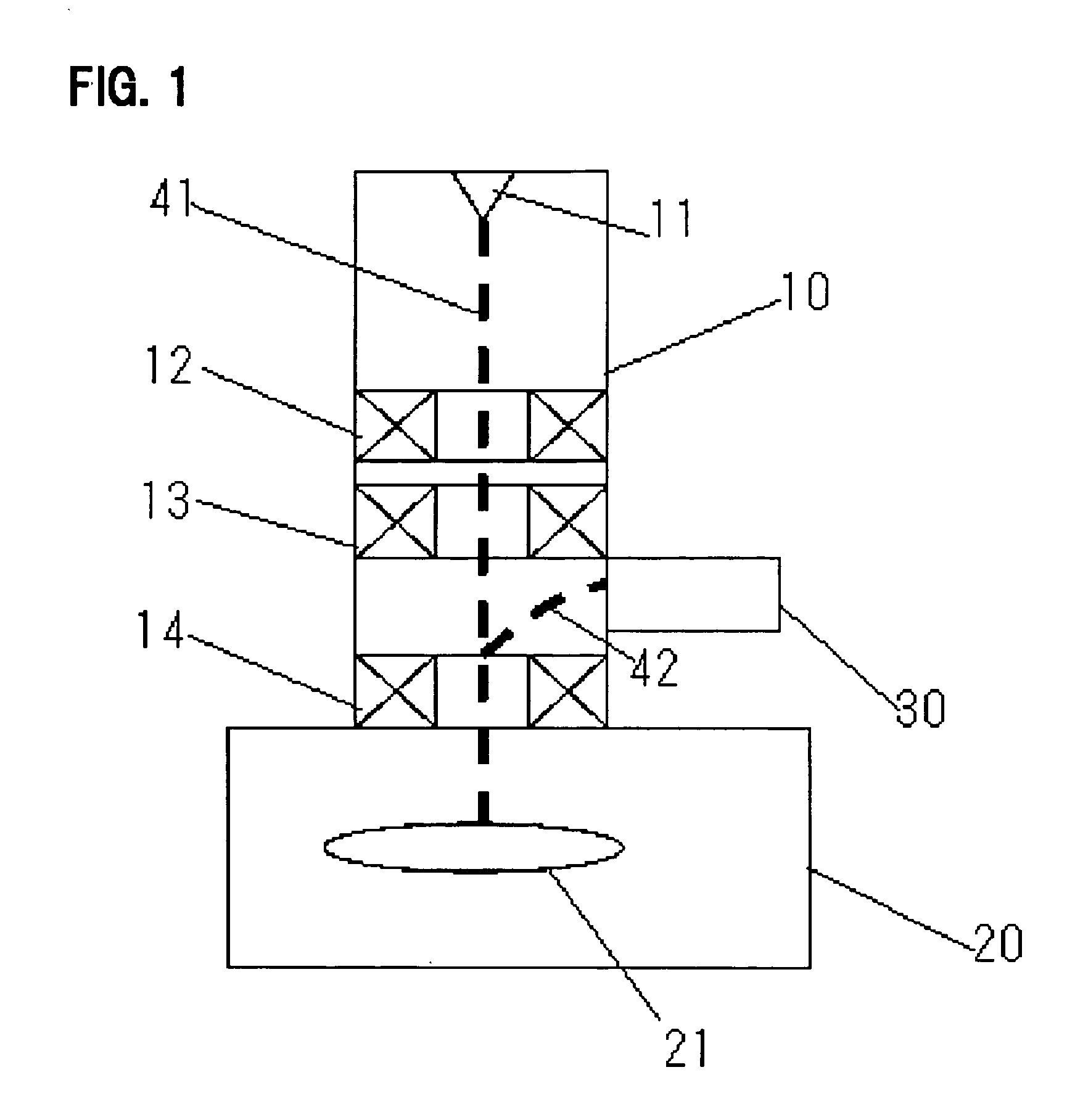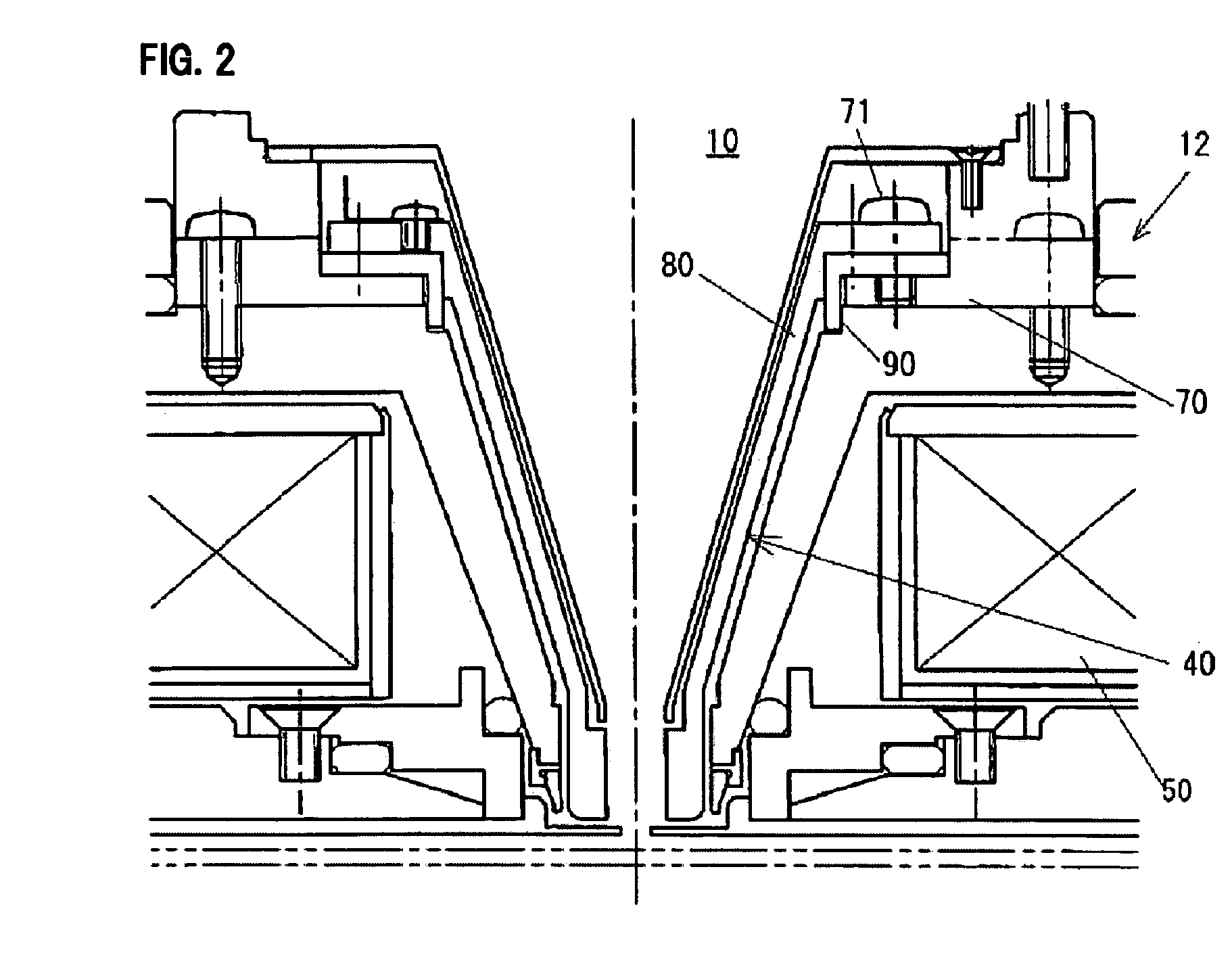Electrostatic deflector
a technology of electrostatic deflectors and electrodes, applied in the manufacture of electric discharge tubes/lamps, instruments, heat measurement, etc., can solve the problems of excessive working labor, difficult to arrange electrodes in equally spaced forms, and insufficient working labor for efficient manufacture of electrostatic deflectors, etc., to achieve easy and accurate manufacture.
- Summary
- Abstract
- Description
- Claims
- Application Information
AI Technical Summary
Benefits of technology
Problems solved by technology
Method used
Image
Examples
Embodiment Construction
[0022]A method of manufacturing an electrostatic deflector according to an embodiment of the present invention will be described below. The electrostatic deflector according to the invention is used in, for example, the scanning electron microscope shown in FIG. 1. This scanning electron microscope, after generating an electron beam 41 from an electron beam generator 11 provided in an upper section of a lens barrel 10, first deflects the electron beam via alignment coils 12 (a first deflector) and stigmatic coils 13 (a second deflector). Next, the scanning electron microscope adjusts a magnification using objective lens coils 14 (a magnification controller), and scans a sample 21. After this, the scanning electron microscope activates a detector 30 to detect an electrically charged particle 42 generated from the sample 21, such as a secondary electron or backscattered electron, and displays an image of the sample at an image display device not shown, such as a monitor. The image of ...
PUM
 Login to View More
Login to View More Abstract
Description
Claims
Application Information
 Login to View More
Login to View More - R&D
- Intellectual Property
- Life Sciences
- Materials
- Tech Scout
- Unparalleled Data Quality
- Higher Quality Content
- 60% Fewer Hallucinations
Browse by: Latest US Patents, China's latest patents, Technical Efficacy Thesaurus, Application Domain, Technology Topic, Popular Technical Reports.
© 2025 PatSnap. All rights reserved.Legal|Privacy policy|Modern Slavery Act Transparency Statement|Sitemap|About US| Contact US: help@patsnap.com



